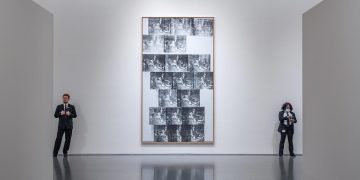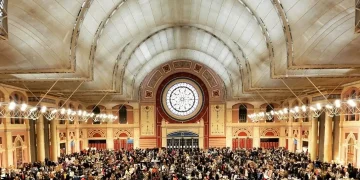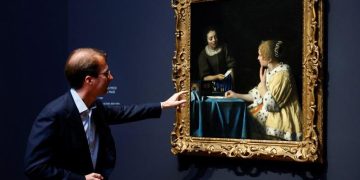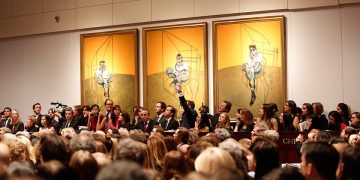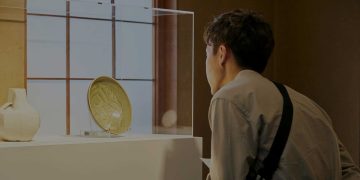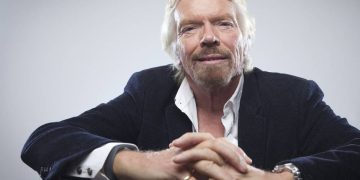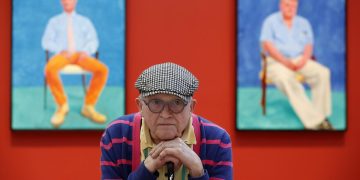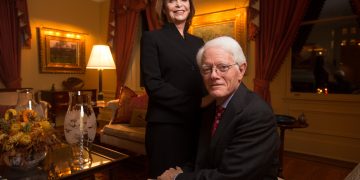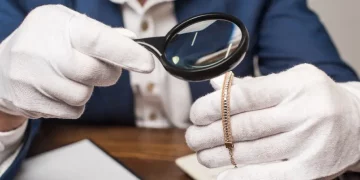Paul Allen, the co-founder of Microsoft, was not only a tech visionary but also a passionate art collector and philanthropist. His lifelong interest in collecting rare art and historical artifacts led to the creation of an extraordinary private collection that has often been described as a “private museum.” Through his acquisitions, Allen curated a collection of unmatched breadth and depth, featuring masterpieces of art, ancient manuscripts, scientific instruments, and historical objects. These items were not only valuable but also deeply tied to the fabric of human history, science, and culture.
So, how did Paul Allen go from a tech mogul to one of the world’s most prominent collectors of rare art and historical artifacts? What was his approach to building this “private museum,” and how did his collection reflect his vision for preserving cultural history? Let’s explore the steps he took to assemble one of the most significant private collections in history, how it became a “museum” in its own right, and the legacy it leaves behind.
1. The Genesis of a Collector’s Passion: A Deep Interest in Art and History
Paul Allen’s love for art and history began early in his life. Although he was primarily known for his contributions to technology and business, Allen’s passion for art was no less profound. His collection reflected his eclectic interests, encompassing a range of periods, styles, and geographical regions. His approach to collecting was not random or driven by market trends; instead, it was rooted in a genuine fascination with human creativity and history.
Allen’s background in technology and his access to substantial resources allowed him to acquire pieces that would be out of reach for most collectors. However, his taste wasn’t defined by wealth alone. He carefully selected artworks and artifacts that not only had intrinsic value but also spoke to larger cultural and historical narratives. This process of curating a collection that was both aesthetically and historically significant laid the foundation for what would become his “private museum.”
The collection began to take shape in the early 1990s when Allen started acquiring significant works of art. His initial focus was on European Impressionism, with works by artists like Claude Monet and Édouard Manet, but it quickly expanded to include American art, modernism, scientific instruments, and rare manuscripts. His approach wasn’t confined to a single genre or period, but rather reflected his deep interest in the ways different cultures and times have contributed to human understanding and expression.
2. Curating a Diverse Collection: A “Museum” for the Ages
The core of Allen’s “private museum” lay in its diversity. He believed that true value in a collection came from its breadth and ability to tell a story that spanned cultures, time periods, and disciplines. Allen didn’t just collect for the sake of ownership; he sought out pieces that were historical artifacts, representing significant moments in human history. His acquisitions ranged from ancient Chinese ceramics and European Renaissance paintings to 20th-century American sculptures and rare scientific manuscripts.
Key highlights of Allen’s collection include:
- Masterpieces of Impressionism and Modernism: Works by Vincent van Gogh, Paul Cézanne, Edvard Munch, and Gustav Klimt. These works not only defined movements in the art world but also captured revolutionary shifts in artistic expression.
- Historical Artifacts: Allen’s collection also included rare items of historical significance, such as ancient Greek vases, Roman sculptures, and Egyptian antiquities. These artifacts provided a rich window into the evolution of human civilization and offered insight into the cultural and social contexts of their time.
- Scientific Instruments and Manuscripts: As a tech visionary, Allen had a deep respect for science and innovation. His collection included Leonardo da Vinci’s “Codex Leicester”, a rare scientific manuscript, as well as instruments used by Isaac Newton and Galileo Galilei. These items reflected his interest in the intersection of science, history, and art.
- American Art: Allen’s collection of American art included works by artists like Georgia O’Keeffe, Jackson Pollock, and Edward Weston. These pieces represented both the vibrancy of 20th-century America and the artistic movements that defined the country during its formative years.
The diversity of Allen’s collection ensured that it wasn’t merely a collection of “beautiful things.” It was a comprehensive representation of the breadth of human achievement across different fields—art, science, literature, and culture. His desire to create a “museum” out of this collection was evident in the way he sought to preserve and showcase these items not just for personal enjoyment but for the public good.
3. The Vision Behind Allen’s Private Museum: Cultural Stewardship and Preservation
Allen didn’t simply collect artifacts for display in his private residence; his true aim was to preserve and share them with the public. He believed that art and historical artifacts had intrinsic value beyond their monetary worth—they carried stories, insights, and knowledge about humanity’s past and present.
In 2015, Paul Allen’s collection became part of the Paul G. Allen Family Foundation, and he began collaborating with institutions like the Seattle Art Museum (SAM) to ensure that his artifacts would be shared with a wider audience. Through exhibitions and loans, Allen allowed the public access to many of his rare and historic pieces, bringing them to art lovers and scholars who may never have had the chance to see them otherwise.
His philanthropy extended to education, with many of his acquisitions being used to fund research, support educational programs, and provide access to underserved communities. For example, his donations of rare manuscripts and historical items were used to support scholarships for students studying history and the arts. Allen’s focus on cultural stewardship created a lasting legacy for his collection, ensuring that the knowledge contained within these artifacts would continue to benefit future generations.
Allen’s desire for cultural preservation wasn’t limited to his own collection. He was also deeply involved in efforts to protect and restore other cultural treasures, particularly in areas where art and history were threatened by conflict or neglect. His commitment to preserving humanity’s heritage underscored his belief that such artifacts were more than just objects—they were keys to understanding the world and the people who came before us.
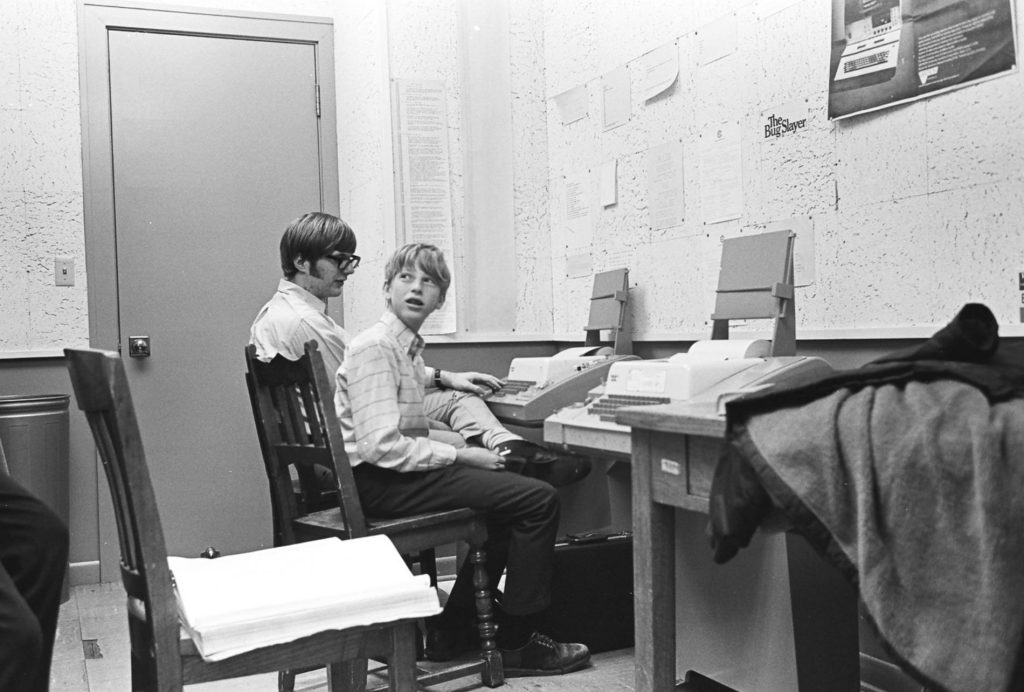
4. The Auction of Allen’s Collection: Legacy and Impact
After Paul Allen’s passing in 2018, his collection of rare art and historical artifacts was put up for auction by Christie’s in 2022, and the results were nothing short of extraordinary. The sale of items from his collection generated over $1.5 billion, setting several records for auction prices. Some of the most notable pieces included:
- “The Card Players” by Paul Cézanne, which fetched an astonishing $250 million, making it one of the most expensive paintings ever sold at auction.
- “La Montagne Sainte-Victoire” by Paul Cézanne, which sold for over $100 million.
- Edvard Munch’s “The Scream”, a piece that was featured in his collection, sold for over $120 million at a previous auction.
The auction not only reflected the enormous financial value of Allen’s collection but also the cultural and historical value of the items within it. Many of these objects were rare, significant, and of immense scholarly importance. The auction was widely considered a historic event, bringing the legacy of Paul Allen’s vision to the global stage and ensuring that these treasures would be preserved for future generations.
The sale of these pieces also served as a reminder of how a personal collection—when curated with care, vision, and passion—can transcend its owner to become a part of the broader cultural and historical dialogue. Paul Allen’s private collection, built over decades, will live on in public institutions, art museums, and private collections across the globe.
5. The Lasting Impact: A “Private Museum” That Lives On
Though Paul Allen’s collection was auctioned off, the impact of his “private museum” will resonate far beyond the walls of his private residence. His acquisitions have found new homes in museums, private collections, and institutions, where they will continue to inspire future generations.
Allen’s legacy as a collector is also reflected in his commitment to philanthropy and cultural preservation. His work in curating, maintaining, and sharing his collection has demonstrated how art and historical artifacts can serve as vehicles for education, dialogue, and understanding across time and space. The concept of a “private museum”—one that isn’t just for the owner’s enjoyment but for the enrichment of society as a whole—was central to Allen’s philosophy, and it will continue to influence the way collectors and institutions approach the stewardship of cultural heritage.
In this sense, Paul Allen didn’t just build a private museum—he created a cultural legacy that will endure far beyond his lifetime. His collection wasn’t just about owning beautiful objects; it was about preserving and sharing the story of humanity. Whether through public exhibitions, scholarly research, or philanthropic endeavors, Allen’s “private museum” will continue to serve as a touchstone for future generations, inspiring them to appreciate, protect, and share the treasures of our shared cultural history.
Conclusion: A Vision Realized Through Rare Art and Artifacts
Through his acquisitions of rare art and historical artifacts, Paul Allen created a “private museum” that was not only a testament to his passion for art and history but also a profound contribution to cultural preservation. His collection of masterpieces from different periods and cultures encapsulated the very essence of human achievement—be it in art, science, or history—and reflected his deep commitment to preserving these treasures for the public.
By combining his business acumen with a love for culture, Allen transformed his private collection into a global legacy that will continue to inspire, educate, and engage people for generations. His
vision for a “museum” was not just about ownership but about stewardship—preserving humanity’s cultural heritage and making it accessible to the world. In doing so, Paul Allen left behind a legacy that is both artistic and philanthropic, a true testament to the power of cultural preservation and the enduring value of human creativity.










